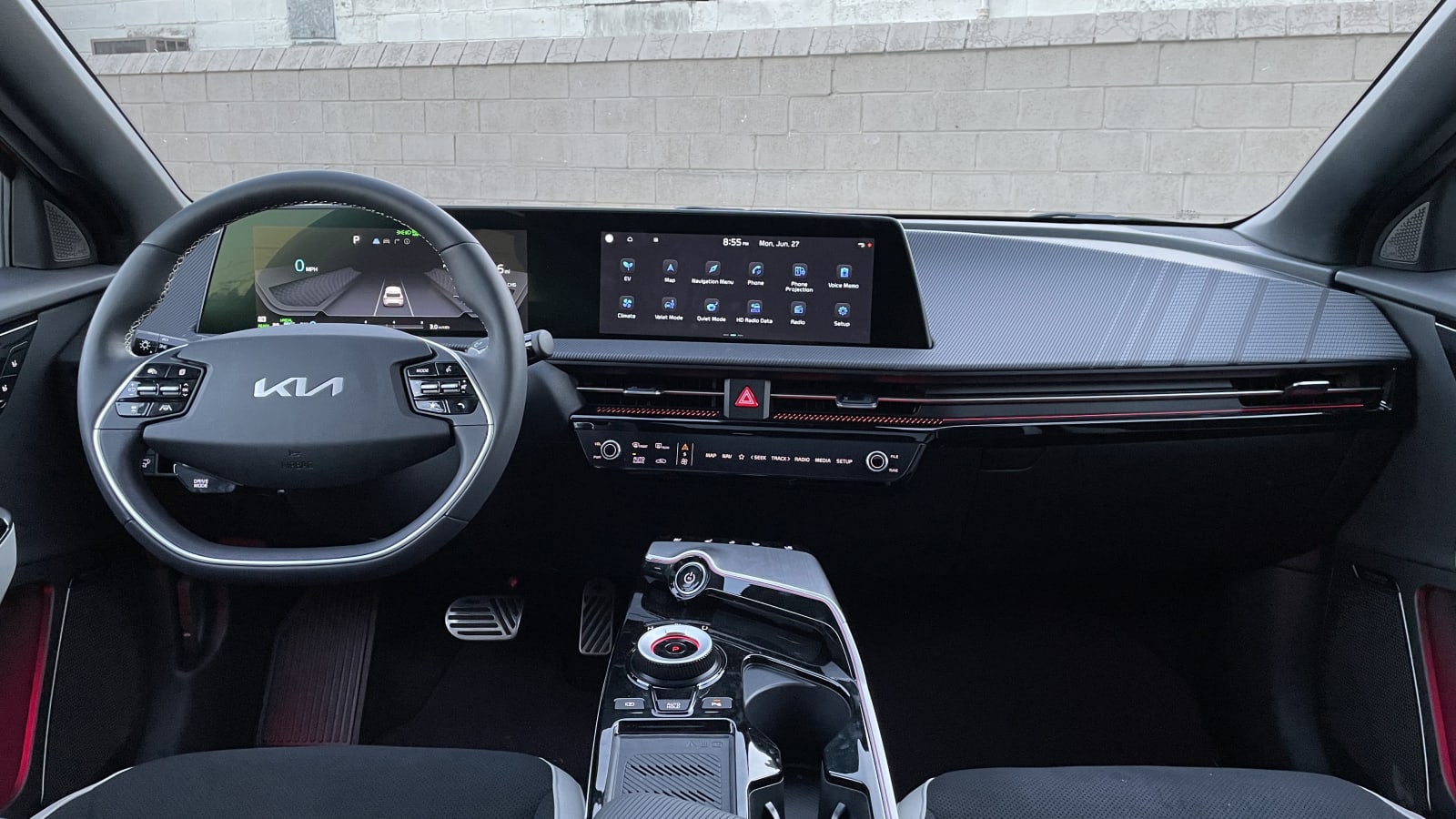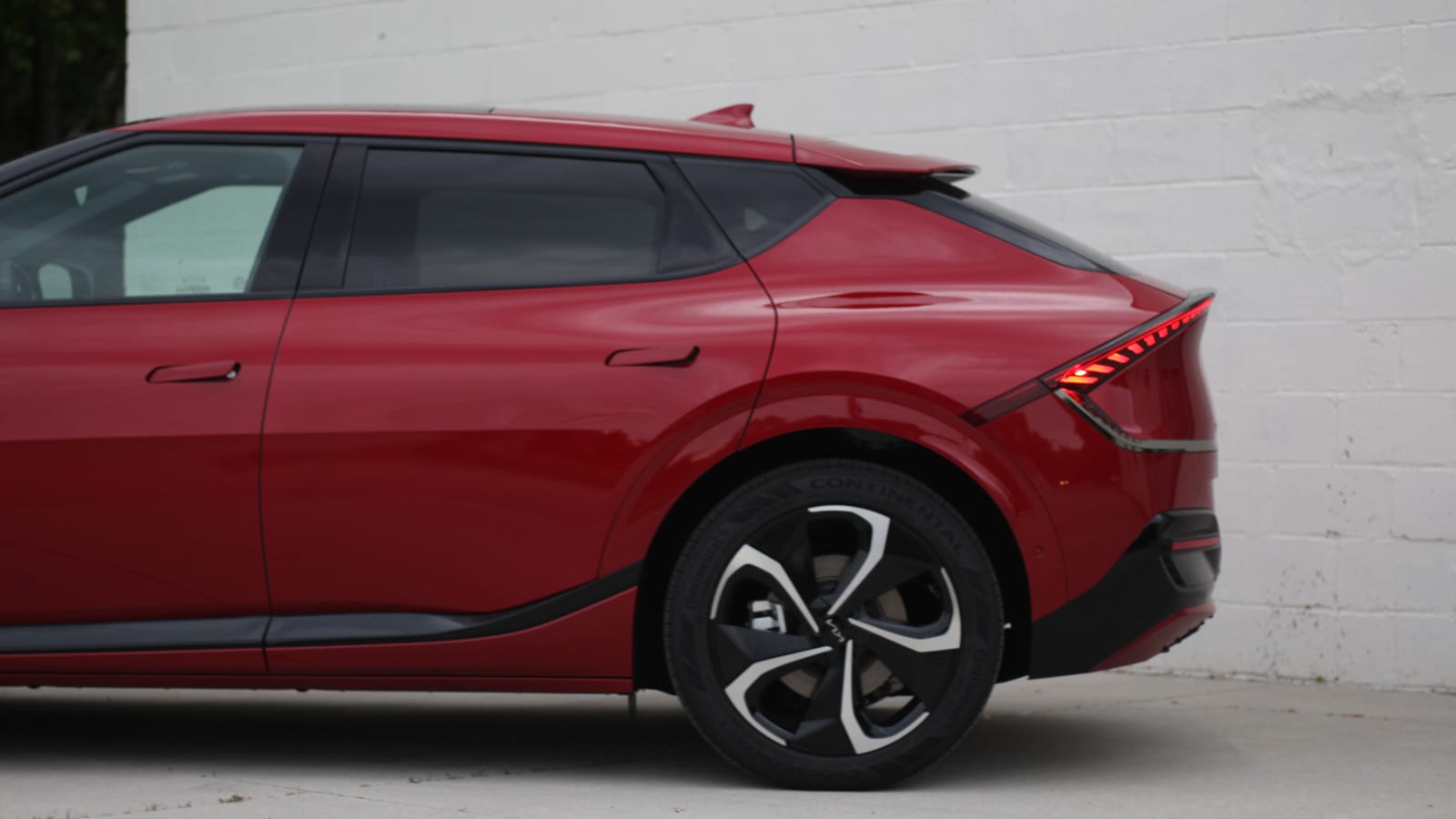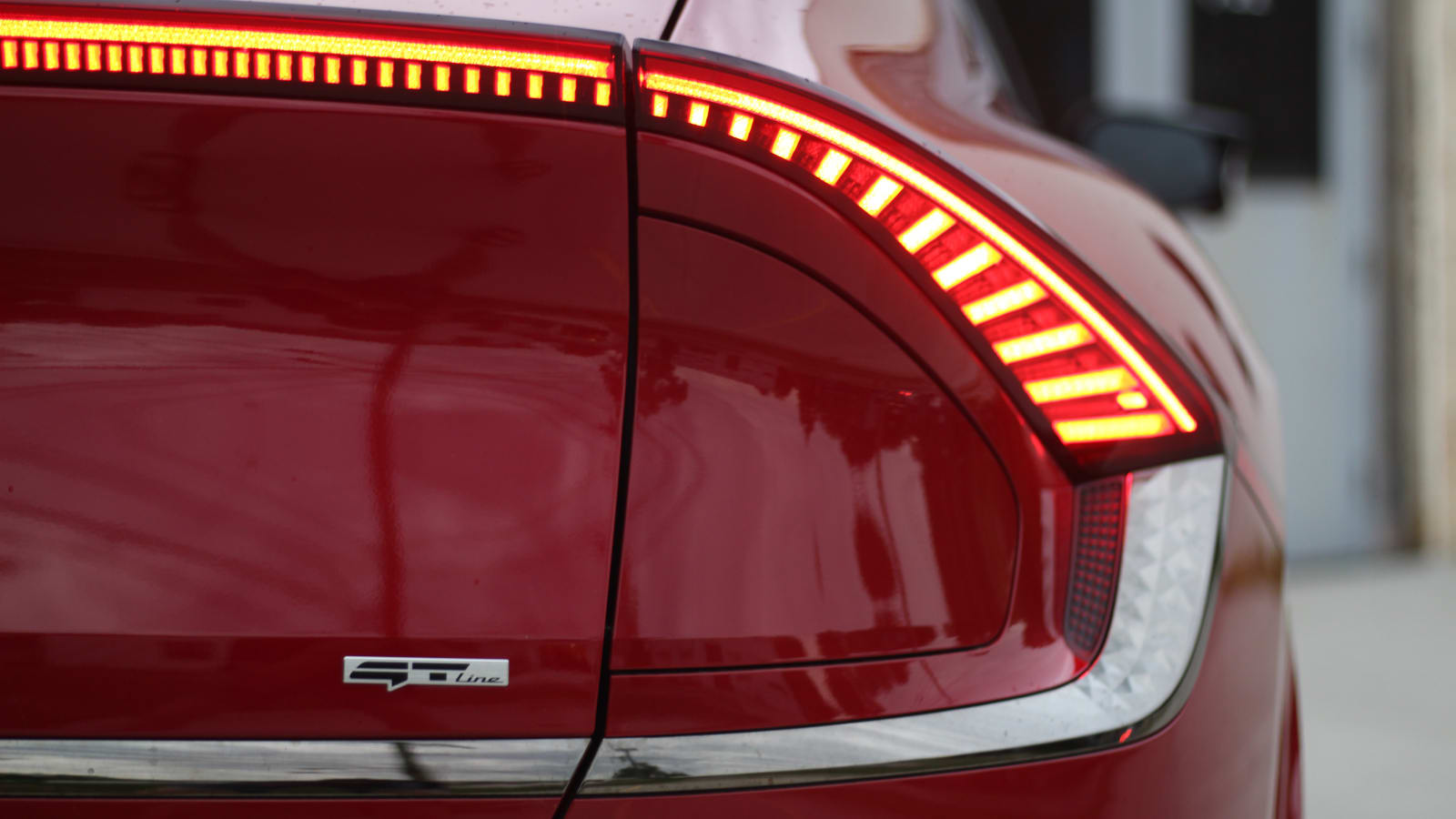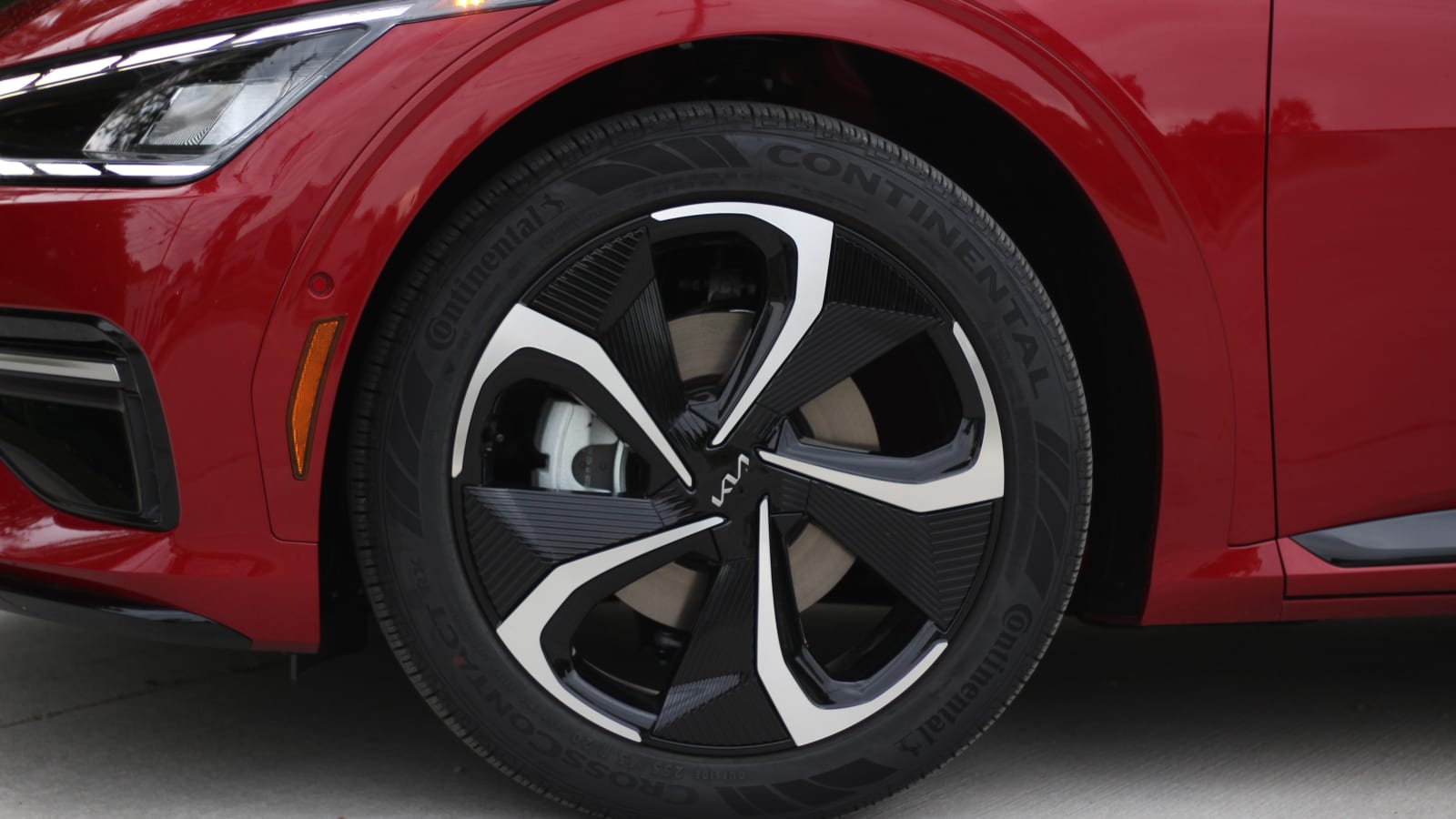2022 Kia EV6 GT-Line AWD Long-Term Test Introduction | To the future!
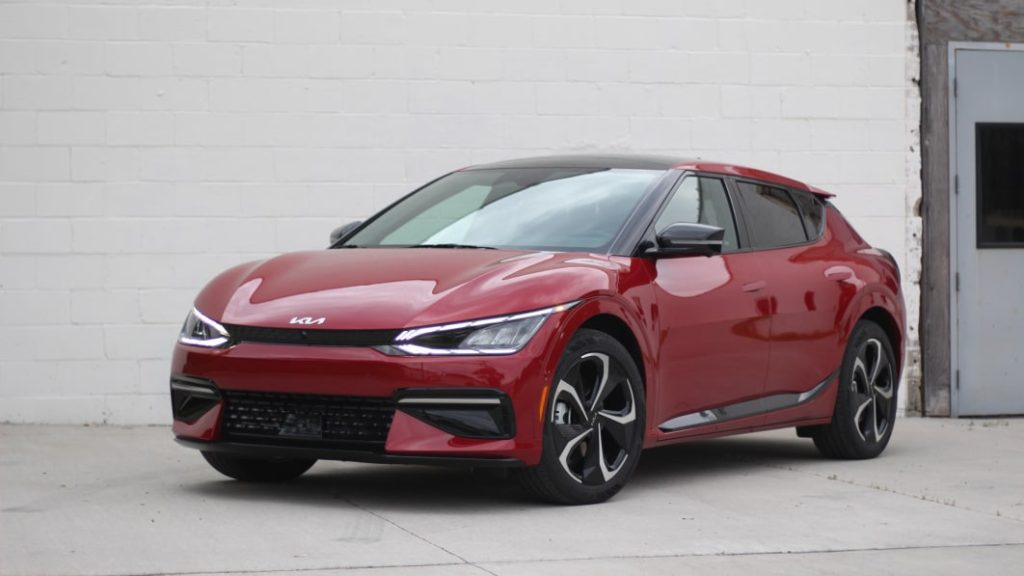
This dual-motor Runway Red 2022 Kia EV6 GT-Line is going to live with us for the next year, and we sure are excited about it. We’ve never had a fully-electric long-term test car here at Autoblog, so consider this the start of many firsts. You can expect scads of posts, deep dives and stories about our time with the EV6 over the coming 12 months, but you should also expect stories about what it’s like to live with any new electric car. What’s the current state of our public electric charging infrastructure for road trips? And will it improve during the course of a year? What does it take to install a Level 2 charger in your home? And lots more! We’re sure to pick up plenty of tips and tricks to pass along to you, no matter what they are, so pay attention to this space.
Both the new Hyundai Ioniq 5 and Kia EV6 — cars built on Hyundai Motor Group’s E-GMP Platform — are spectacular electric cars on paper, and we decided to make the sporty-looking Kia our companion for this test. Even with the vehicle sitting before us in our parking lot, it’s hard to expressly pin down what the EV6 should be classified as (looking at the spec sheet doesn’t really provide much help, either). The slightly-high ride height says low crossover, but the body shape is more like a wagon, which is what the EPA officially classifies it as. Perhaps an extended period of time behind the wheel will give us a better understanding of what exactly the EV6 is, and if semantics like these even matter.
The technology within the EV6 is mighty impressive, and the performance on tap is rather enticing, too. As of delivery, the EV6 is one of the quickest charging EVs you can buy. Plug it into an applicable fast charger, and it peaks around 240 kW, allowing the EV6 to charge from 10-80% in just 18 minutes. We’ve already seen it do exactly that a few times, so yes, it charges just as quick as advertised.
Because we have the all-wheel drive EV6 with one electric motor on the front axle and another on the rear — total output is 320 horsepower and 446 pound-feet of torque — it’s shockingly quick in a straight line. Kia says the 0-60 mph time is only 5.1 seconds, and it feels every bit that quick. There’s no doubt that the EV6 was designed and engineered as a utilitarian and family-friendly tool, but it’s already clear that we’re going to have way more fun driving it than most utility-focused crossovers.
Why we got it
The Kia EV6 is one of the most important vehicles to go on sale this year alongside a number of other high-profile electric cars that launched in the past couple of years. It’s an electric car with an attractive price, alluring design and very few on-paper compromises. Tesla has had major advantages over EVs from other car companies for a long while, but the EV6 can legitimately go toe-to-toe with a Model Y. Plus, with Tesla’s relentless price hikes, the EV6 is a comparative bargain.
We also want more experience living with an electric car in the current environment. Things have changed a lot in recent years in terms of both at-home and public charging, and will presumably continue to change. It’ll give us ample time to fully test what it’s like to live with a state-of-the-art EV like the EV6, and how its advanced charging capabilities make things easier (or at least different) from its predecessors. We’ll also look to find out how much it will cost to run versus similar, gasoline-powered long-term cars. What will an entire Michigan winter do to change our opinions? How viable is an electric car like the EV6 for completing road trips in the Midwest? Will we have the guts to drive it out to West Coast Editor James Riswick in California? We’ll answer all of these questions, and more.
What we got
To make sure we’re going to test everything the Kia EV6 has to offer, we picked the top-rung GT-Line AWD model from the EV6’s trim ladder. This ensures the big 77.4 kWh battery pack is present and the quickest-possible charging experience is accessible. Those vitals are available in other trims, too, but the GT-Line has a unique, sportier appearance that we tend to prefer. The body-colored wheel arch molding, GT-Line-specific 20-inch wheels, GT-Line body kit and auto-extending door handles were all items we wanted to have. The GT-Line AWD model is also the only one that comes with Kia’s heat pump, so it should in theory be the EV6 best-suited for tackling Michigan’s winter.
As for the color, we chose the bright and vibrant Runway Red for no additional cost. Matte Gray was available for an extra $695, but we’d rather not have to deal with any special upkeep for a matte paint finish.
When it comes to the interior, we opted for the Suede Seat Package that added $295 to the GT-Line’s base price of $57,115. Instead of “vegan leather” over “vegan leather,” now we get multiple materials with the “vegan leather” paired with Kia’s suede (which is definitely not from a cow, either). It adds a touch of sportiness to the interior, and we can already tell that the faux suede inserts grip better than the slick faux leather does. Beyond the upholstery, we checked the boxes for the $95 cargo mat with a luggage board and the $170 carpeted floor mats.
There are very few options that are even selectable on Kia’s configurator once you step up to the GT-Line — anything that is offered is essentially included — making our model close to as loaded as you can go at $57,675. Of course, you’ll need to take into account the federal $7,500 tax credit and any other state credits when you make your own affordability calculations.
Look out for more soon on our long-term EV6 as we begin this journey, and do let us know in the comments what you want to know and see us do over the course of 12 months.
Related video:
